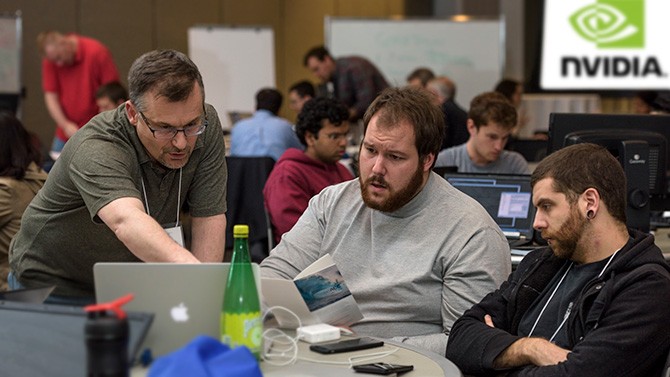University of Delaware named an NVIDIA GPU Education Center
The University of Delaware has been named a GPU Education Center by NVIDIA, a computer technology company that has pioneered GPU-accelerated computing.
GPU Education Centers are institutions recognized for integrating GPU-accelerated computing into their mainstream science and engineering curricula.
Sunita Chandrasekaran, assistant professor of computer science, will direct the effort at UD.
Chandrasekaran, who led a GPU hackathon at UD earlier this year in collaboration with Oak Ridge National Lab, explains that GPU-accelerated computing is the use of a graphics processing unit together with a central processing unit to overcome the power and space limitations inherent in previous generations of high-performance computers.
The technology enables dramatic increases in performance for artificial intelligence, deep learning, graphics, engineering, and other computationally demanding scientific applications.
As a GPU Education Center, UD will have access to NVIDIA GPU hardware and software, and NVIDIA parallel programming experts and resources, including educational webinars and an array of teaching materials.
UD students and faculty will also receive access to free online GPU programming training. The comprehensive, self-paced training spans introductory to expert-level coursework on a range of GPU programming languages, applications, libraries, programming models and tools.
UD was recognized for its commitment to advancing the state of parallel programming education. The University has invested in a number of courses that teach GPU programming at both the graduate and undergraduate levels, and a parallel programming course is mandatory for undergraduate computer science students starting this fall.
In addition, Chandrasekaran will be leading a project on high-performance computing through UD’s Vertically Integrated Projects (VIP) program in spring 2017.
All GPU-related courses include lectures on important concepts and principles of GPU hardware and its architectural design as well as on the programming aspects of these devices.
Lectures and projects span the use of GPUs in both the embedded and high-performance computing worlds. Examples range from robot navigation and interaction using GPUs, to deep learning, to image-based detection, to tapping into the potential of GPUs for scientific legacy applications.
“This is an excellent opportunity for our program and our students to be exposed to the latest innovations in parallel programming models,” says Kathleen McCoy, chair of the Department of Computer and Information Sciences.
“Sunita’s enthusiasm is infectious, and we are so fortunate that our program is recognized as cutting edge in this area. Parallelism is the future, and we are grateful to NVIDIA for this opportunity for our students to become fully conversant in GPU technology.”
Other faculty members participating in the effort include Michela Taufer, John Cavazos, and Christopher Rasmussen in computer and information sciences and Xiaoming Li in electrical and computer engineering.

